 |
For our next installment of Jazz Collectors of Instagram, we have a very special collector indeed. While Dott was the first collector to be featured in the series who lives outside of the United States, Japan’s Ako Nakagawa is now our second! Ako is relatively new to the scene, and over the past six years she has managed to stack her shelves full of jazz vinyl while amassing over 500 Instagram posts since June 2016.
Ako is a thoughtful collector who is particular about her equipment choices, and she approaches the hobby with creative flair. Through Instagram she also shares her hand-crafted miniature album jackets, which, according to the artist herself, are largely an expression of her passion for English typography. Please enjoy the photo collage of her work following the interview!
I have always admired “thrifty” collectors who find a way to enjoy this hobby without feeling obligated to shell out $2,000 for an original pressing of an overhyped album. Ako is one of those collectors (she has used the phrase “cheap heat” to describe many of her acquisitions), and I think even the most experienced hobbyists will find they have something to learn from hearing her story.
DGM: How long have you been collecting records and jazz records specifically?
Ako: I am a relative newcomer or latecomer to the jazz collecting community; 2014 was the year I started intensely collecting jazz records.
My first jazz album (CD) was The Shape of Jazz to Come when I was 19, and at that time the music industry was already usurped by the new compact disc format so there was no choice but to purchase second-hand CDs at a local book and rental CD and video store. I don’t clearly remember the reason why I chose jazz as my chief music; my boyfriend was a big fan of UK prog rock, and a male audiophile friend from university adored classical music (I’ve never had any female friends who are passionate about music). So at that time nobody around me seemed to acknowledge the existence of jazz. It was a closed book to me but I couldn’t help opening and reading it.
Even when I was collecting CDs I had the sense that a record possesses a collectible feature that a CD doesn’t. And this sense came from my first encounter with LPs my older brother borrowed from his friends and proudly showed me. I still remember when he beckoned me over to the turntable and demonstrated how to play a record. Soon he started buying UK rock and New Wave twelve-inch records and brought home more borrowed LPs, which was 1983 when I was 12. And my first LP was a Police album that remains on my shelf.
DGM: How did you get started collecting jazz records?
Ako: Jazz is the only music I’m really into and will stick to forever. However, my start collecting jazz records is a sort of rigmarole.
About 2002 or 2003 I found a local café owned by an avid record collector who sells his records there. He threw an “all-night” party every month where sundry DJs brought their records to play. Perhaps joining this event made me aware of the magnetic allure of records: a bigger cover with ring wear, some popping noises from the speakers, two black circles spinning on two turntables…because of these trivial traits I felt renewed interest.
Through this event I met one DJ who always brought his wife with him. We seemed almost contemporaries so while he was playing I struck up a conversation with her. She collected records in a modest way but complained that the entire upper story of their two-story house was dominated by rows of his record shelves so someday they would be buried under the collapsed upper floors and ever-growing records. Her complaint made me foresee that space and storage problems would soon be looming as I knew my tendency to be a collector: once I started collecting something I couldn’t refrain. Despite the potential pitfalls, I couldn’t dismiss the idea of collecting jazz records and vaguely sensed that I would give the hobby a try at some point.
At the aforementioned party I met a guy who was into acid jazz. He asked me whether I knew Gilles Peterson or not; this was the first time I heard the name. So the next party he gave me some CD-Rs of Gilles’ radio programs on BBC Radio 1. Soon I delved into his works and realized that I only knew big names and there were tons of good jazzmen and women I’d never heard of. This happened about 2004 and I started casually looking for jazz records.
However, there was a mild interruption; in 2005 I moved to London and lived there until 2008. I was a student who desperately needed some English certificates; I had to cover my school fee and the high cost of living with my meagre savings, so practically, I couldn’t afford to buy jazz records. Before heading for London I promised to myself that I would keep record stores at a distance.
I often went to parties and events for the sake of my English and with a bit of luck I met a Lithuanian DJ who befriended me and generously gave me a Numark Scratch portable record player; the AC power plug was slightly flawed but it worked. Soon I failed to comply with my resolution and started haunting record stores. I got my first jazz records at a music store called Fopp in London, where I had the first good luck to find Ornette Coleman’s Ornette on Tenor and Mel Torme’s Comin’ Home Baby in a bargain bin. I’ve still got this store’s plastic bag as a keepsake.
Also, there were several chances to be a witness to Gilles’ live DJ that stimulated me into collecting jazz records. When the time came to go back to Japan there was a box of jazz LPs and acid jazz twelve-inches that I had to cram into my suitcase. So I would rather think that my life in London was a good and final prod to start collecting jazz records.
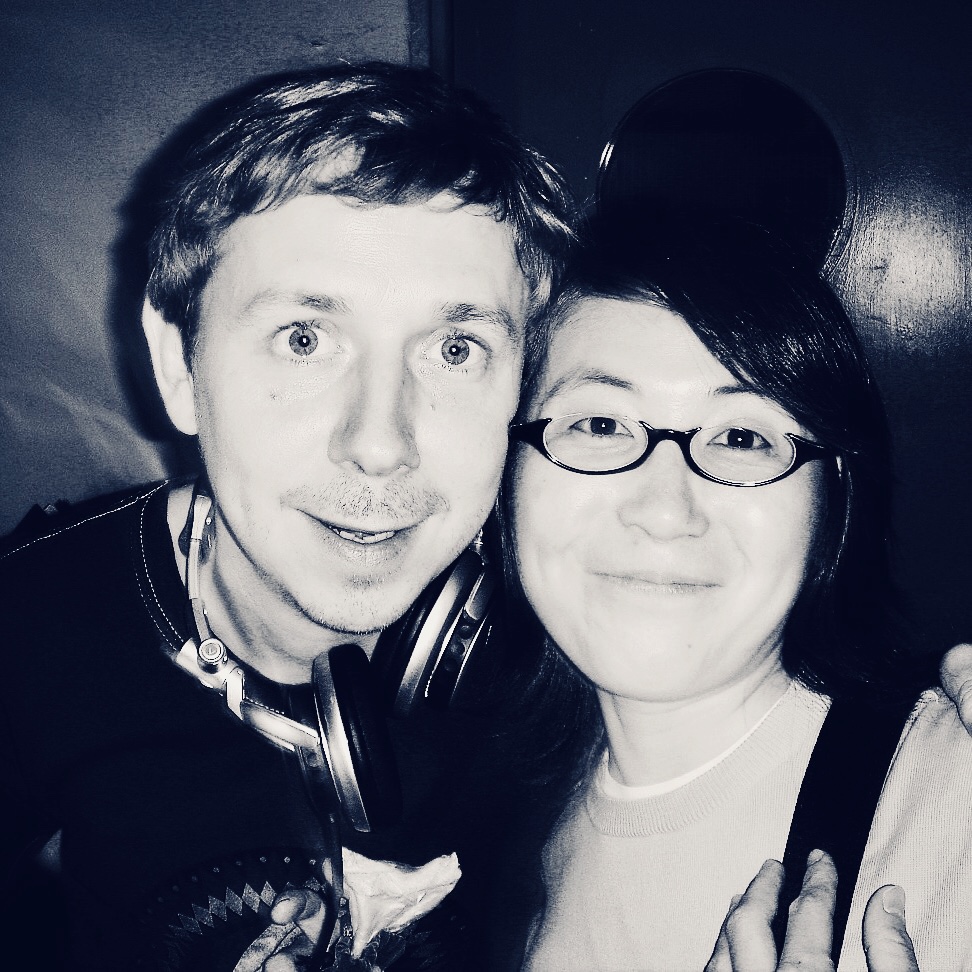 |
| Ako with Gilles Peterson circa 2005 |
DGM: How did you amass your collection and what’s your process for finding new records?
Ako: Like many collectors I have my want-list. But I don’t limit myself to looking for specific records as there are many haphazard finds when doing a regular search in physical and online shops. Around my place there aren’t many decent record stores, save the aforementioned café-cum-record store, so my shopping spree mostly depends on online shops where I incessantly check their new arrivals. Other resources: Discogs, where I buy records from Japanese sellers. Chance encounters happen through Instagram; the luckiest case is that I’ve met (followed) an independent label owner who gives me a regular assignment as a translator for their new records, and as rewards I get complimentary records. Charity shops and second-hand book stores can be unexpected resources whose unenlightened owners shove good records into a bargain bin, which is why I’ve never neglected a bargain bin.
DGM: How many jazz records do you have in your collection?
Ako: I’ve never counted but roughly 600; I’ve stopped buying other genres of records and other formats entirely since 2014.
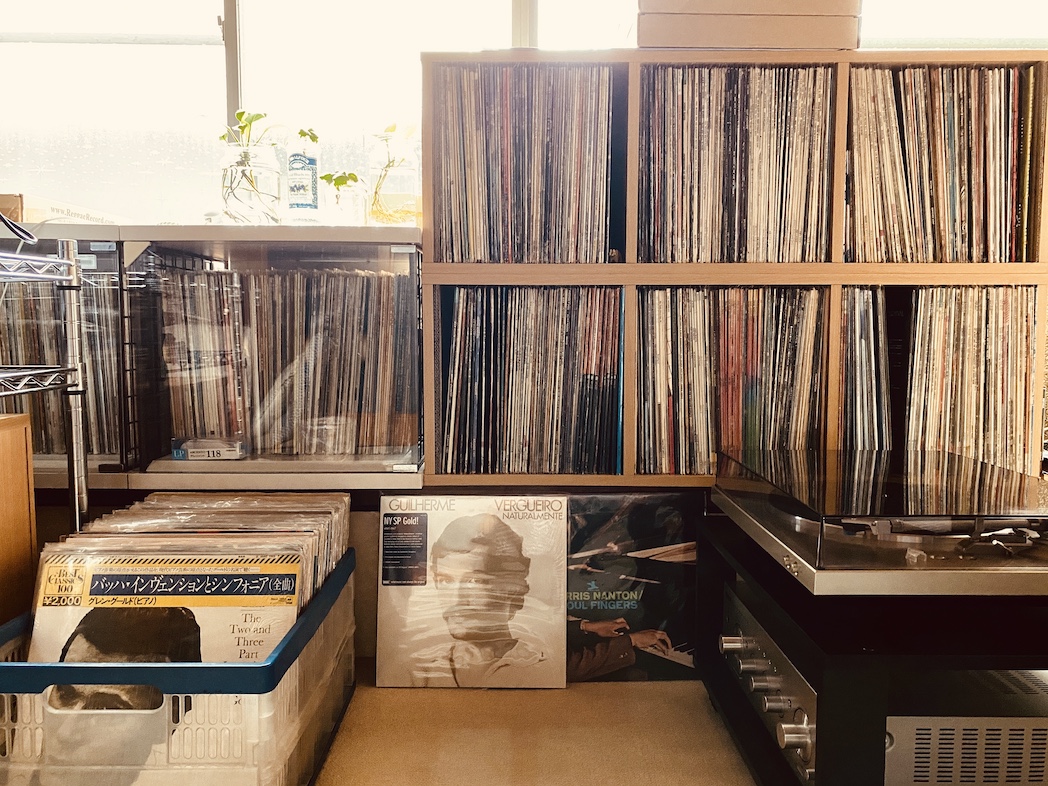 |
| Ako’s listening nook |
DGM: Do you collect originals, reissues, or both?
Ako: I prefer earlier pressings but not necessarily original pressings. If there are inexpensive originals I’ll purchase them, but such good finds rarely appear so I stick to my rule, which is to buy Japanese reissues from the ‘70s and early ‘80s, which are much less expensive than other pressings and in better condition, both platters and covers. And if a platter is good enough, I’m not too fastidious about cover conditions.
DGM: What equipment do you use for playback?
Ako: My biggest concern for equipment is that it should be able to endure the scorching and muggy climate of Japan. I don’t think foreign manufacturers take the oppressive heat and excessive humidity into account when they produce equipment. So all my (low end) components are produced by Japanese companies.
Turntable is Denon DP-300F whose originally attached cartridge was awful so I immediately changed to an Audio-Technica AT95E and now I use its successor, the AT-VM95C. All are stereo cartridges.
I chose the TEAC A-R630 MKII integrated amplifier because it’s got a cooling fan; I’ve never seen an entry-level, budget-friendly amplifier with a cooling fan before. And a nice classic look is kind of a bonus.
The most recent acquisition for my setup is Sony SS-CS5 three-way bookshelf speakers. It took me nearly one year to decide the best affordable speakers for my small room.
I am not sure whether speaker cables really make a difference to sound quality or not, but I always enjoy minor alterations to my setup. I use Canare 4S8 which is 13-gauge star quad (four-conductor) cable. They are the most popular product of Canare and two three-meter cables cost me $10.30. These are raw end cables which I terminated with Viborg BFA type banana plugs. Before Canare I used Belden 8470 but to my ears Canare is the winner.
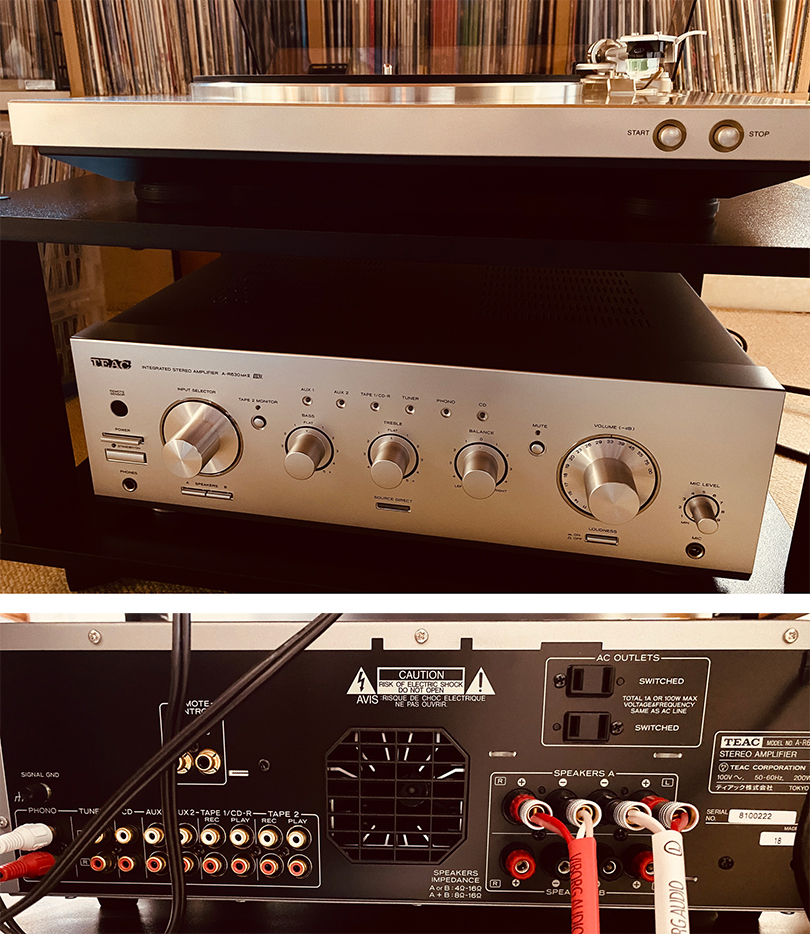 |
| Ako’s turntable and amplifier — notice the fan on her amp |
DGM: Do you prefer mono, stereo, or neither?
Ako: I can’t say I have a preference as the majority of my records are released in the ‘70s so they are stereo pressings. On my shelves there are a handful of mono records released in the ‘50s and ‘60s for which I use a stereo cartridge for playback. However, I read your article “Mono Vinyl Playback on a Modern Stereo Audio System” and I’ve got the gist of the principles of mono/stereo records. So in the near future I’ll install a mono cartridge to my turntable and compare the sound; a “mono/stereo” experiment would give me a thrill!
DGM: Who are some of your favorite artists and labels?
Ako: I have a penchant for these instruments: flute, vibraphone, congas, and bass clarinet. If I have to narrow down my “long” purchase list to several jazz records, considering my favorite instruments makes it easier; to me favorite instruments are before favorite artists. So I choose my favorite artists in accordance with my favorite instruments: Walt Dickerson, Sahib Shihab, Prince Lasha, Jeremy Steig, James Mtume, Eric Dolphy.
Of course I like big labels like Impulse! and Blue Note but records released by both labels are rather expensive in Japan. So I choose relatively pocket money-friendly labels: SteepleChase, Riverside, Prestige and Black Saint.
DGM: What’s your favorite jazz record in your collection?
Ako: The toughest question of this interview so a safe choice will be better: The John Coltrane Quartet, Coltrane. I’ve got a soft spot for modal jazz and “Soul Eyes” always kills me!
DGM: What is one of your most memorable acquisition stories?
Ako: The most memorable find: Thelonious Monk, Brilliant Corners, 1958 Japanese first pressing, London Records; it cost me $4.81. The shop I found it at is run by two retired gentlemen who sell only jazz records and CDs. When I want to find nice classic jazz records, I always check this shop.
These are really cheap and cheerful finds among my collection:
– Paul Serrano Quintet, Blues Holiday, 1961 US original pressing, Riverside; found in an online shop, $9.43.
– Friedrich Gulda, Gulda Jazz, 1969 Japanese repress, Columbia; found it in the aforementioned jazz record store, $9.63.
– Walt Dickerson Trio, Peace, 1975 Japanese pressing, SteepleChase; my first Dickerson album by my favourite label SteepleChase, Discogs, $6.30.
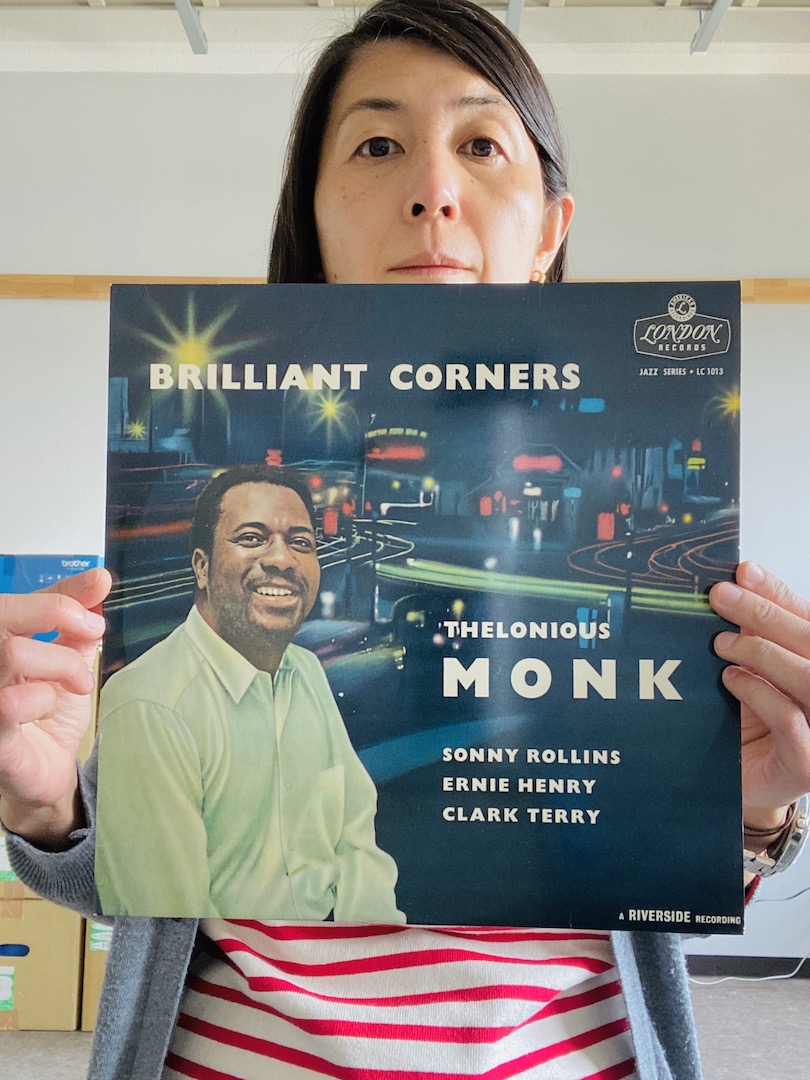 |
| Ako with her copy of Brilliant Corners |
DGM: What are your thoughts on the past, present, and future of the jazz record market?
Ako: Jazz has been and will continue to be a “male-dominated” world; the majority of jazz collectors are men who are less capricious than women are. Their dedication to jazz is always strong and steady so that the jazz record market will be long-standing and never fall into decline. Perhaps 90% of my jazz records are second-hand, which means they come from other jazz collectors, who I think are more selective and neat than collectors of other genres. I don’t buy jazz records from overseas (because of expensive shipping) so I don’t know about the conditions of the other countries’ markets but in Japan there are always plenty of jazz records available in great condition. Other genres like fusion and funk I sometimes picked really bad records, but I’ve never had a bitter experience from grabbing a bad jazz record. So I always think that the previous owners of my jazz LPs handled them with great care. Quality collectors make good markets. Because of this I love jazz and rely on the jazz record market.
And now, ladies and gentlemen, the art of Ako Nakagawa:
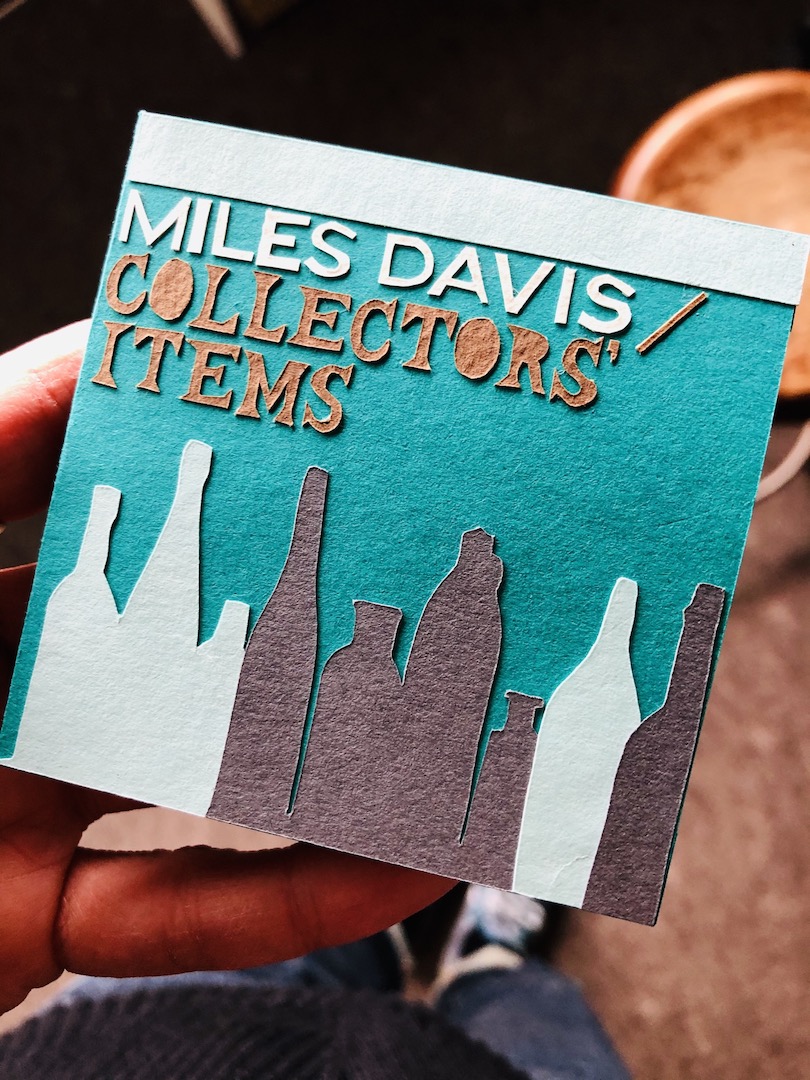 |
 |
 |
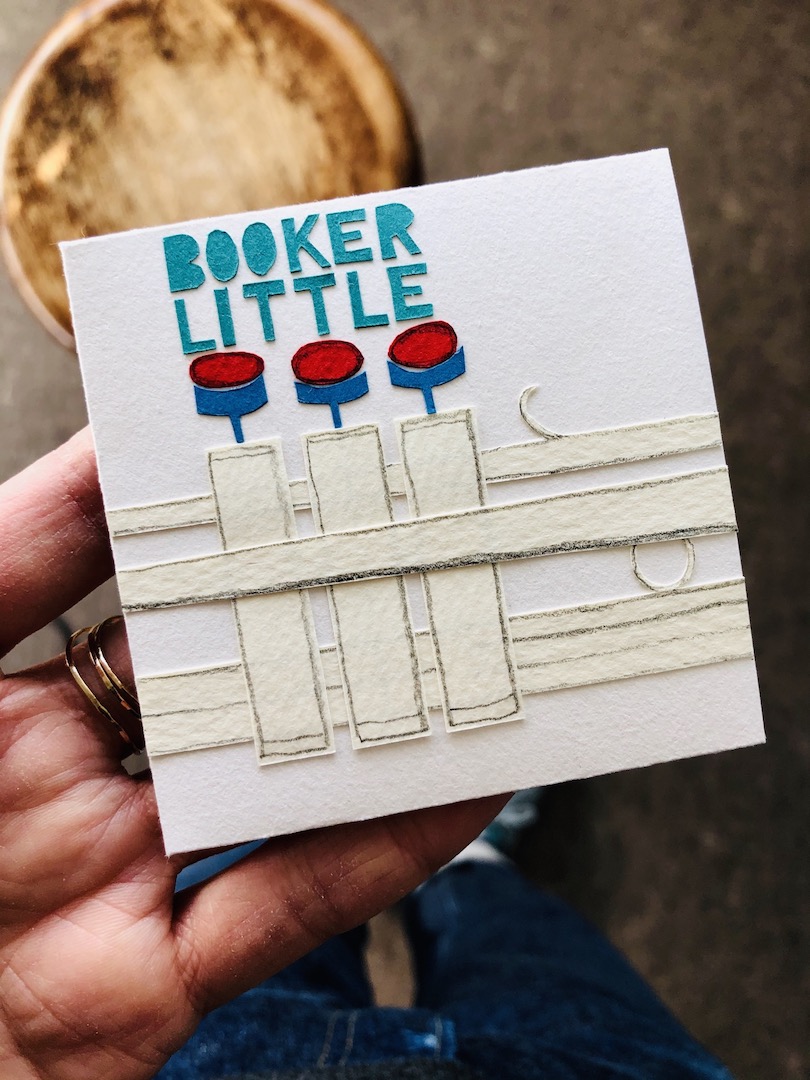 |
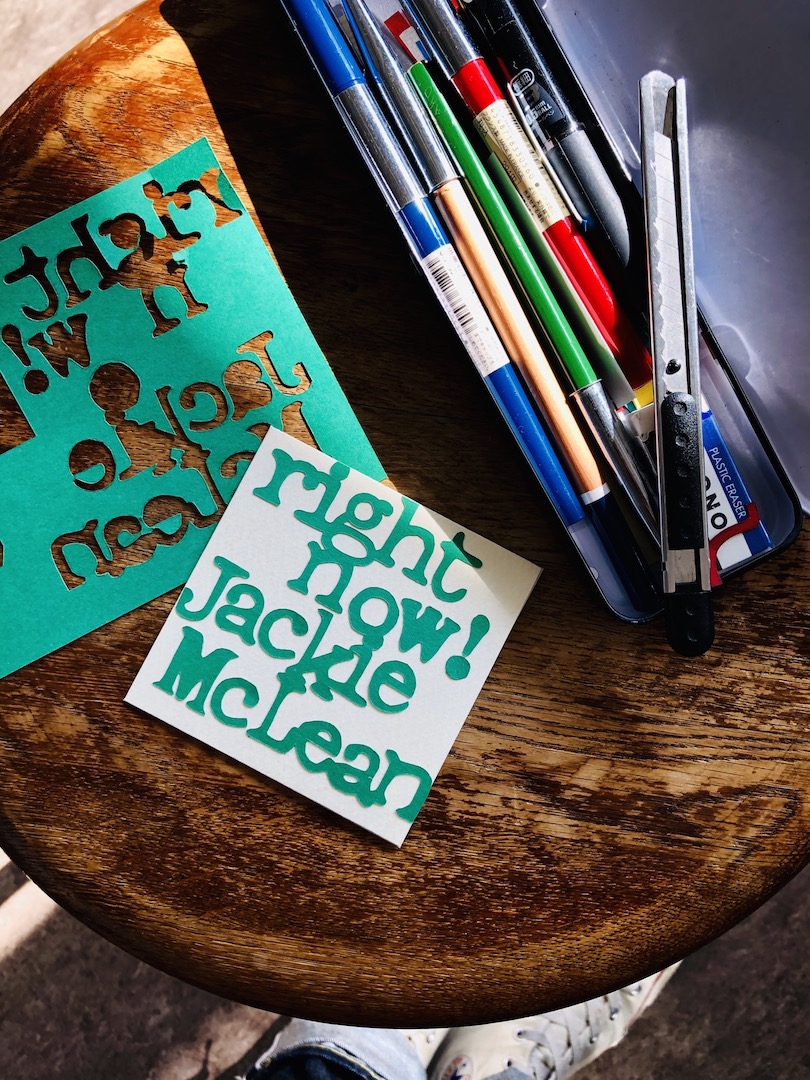 |

